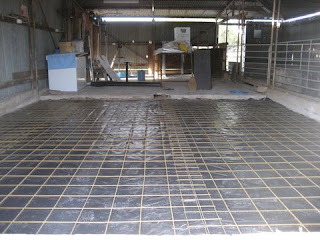First thing on Thursday morning 17/11/2011 we noticed we had no signal for our wireless internet connection or mobile phones. This is not unusual as on occasions Telstra carries out maintenance activities. By lunch time there was still no signal so we decided to call the Telstra technical support number to resolve the issue. After selecting various options on the automated voice response we were put through to a consultant, who it turns out is based in the Philippines
During the reinstallation process the phone cut out and we were basically left in ‘no-mans land’. On calling back the technical support unit we were put through to a representative of the ‘Customer Excellence’ team (still in the Philippines
We put another call into the Telstra technical support team and ended up speaking with a different member of the ‘Customer Excellence’ team. They had been incorrect in telling us that that there were no outages with any towers and they had also misled us by getting us to de-install the software from our PC. Off the back of this we sought approval to contact the consultant that goes to the Young Telstra store and get him to re-install the software, with Telstra to pick up the tab for the cost. On the cost side we explained that we would be prepared to travel to the consultant at our own expense, and thus they would only be up for the cost of the consultant’s time. Our suggestion and the background to it was communicated to the Telstra ‘complaints’ unit, with us being given a complaints reference number, a phone number for the complaints team and told that the matter had been logged as urgent and that we might get a call within 24 hours. The consultant also told us that he had arranged for a copy of the software we needed to be posted to us and that it might reach us in 5 working days.
To us connection with the internet is important as aside from personal use it is also handy for our farm and consulting activities. We were not prepared to wait indefinitely for a telephone call from the Telstra complaints team so rang them first thing Friday 18/11/2011. The case manager assigned to us read the background from their case management system and we also explained what had happened. Her initial stance was that Telstra would not pay for the consultant’s time, that the only option was for us to wait until we received the software CD, and that Telstra does not have any technical support people that do face to face work (all of them can only be accessed by phone). She put a call in to the Telstra technical area and was told that there were no outages in our area. We put it to her that she was thus basically saying that the person we’d spoken to at the Young Telstra store the day before was a liar, and asked her to call him. She did this and we were pleased that from that point on she was no longer implying we were lying and insisting that the problem was not at their end.
Telstra has an internal database called something like ‘Network Wellbeing’. From this customer service staff can do searches to indentify reported problems with communication towers and the like. After quite a bit of searching our complaints case manager found that the Tallabung Mountain Telstra Tower
We called the Grenfell Internet Centre and were pleased to learn that they were willing and most likely able to get our PC software issue resolved. Later in the day we took the PC to them and it was up and running within about an hour. By yesterday morning our signal was back up and running i.e. we were ‘back on the air’.
The key lessons others might like to consider taking from our experience are:
1. Get to know your signal origin tower name. This information can be found on most mobile phone bills. It is from this that you will be able to give sufficient information to the telecommunications provider when something goes amiss. We'd have saved ourselves a lot of angst had we known this when we first called for help.
2. Be wary of the advice that comes from the technology support team.
3. If asked to de-install software first check to see if you still have the original installation CD on hand
4. Don’t be bull-dozed by the complaints case managers and stay focused and determined in dealing with them. They do have authority if pressed to at least temporarily waive plan fees to help compensate you for the run-around where errors do occur. They are performance assessed based on complaints closed at minimal cost and our experience suggests that the culture, policy and processes centre on not believing what complainants say.
Having made the last point above we are not suggesting that Telstra’s staff are unskilled or unhelpful. All those we dealt with tried to help. It’s just that there are massive disconnects in their spatial knowledge about rural areas. By way of example, the bloke we spoke to first in the Philippines mentioned at one point that he’d never come to Australia ‘because it’s too cold’.

















